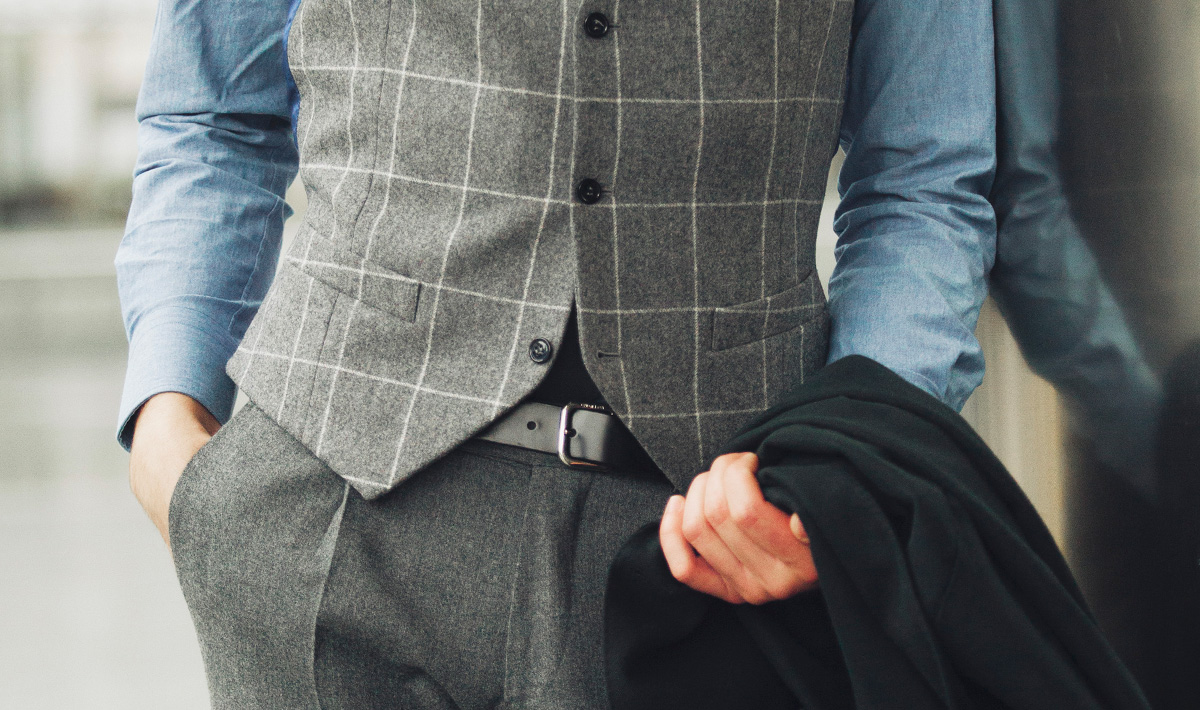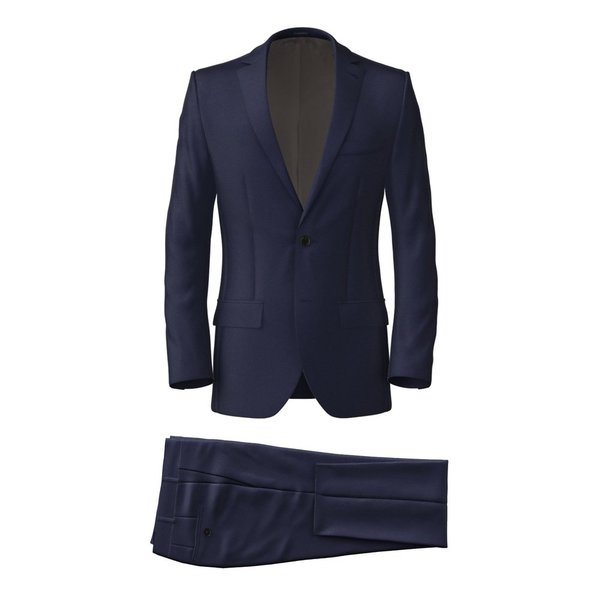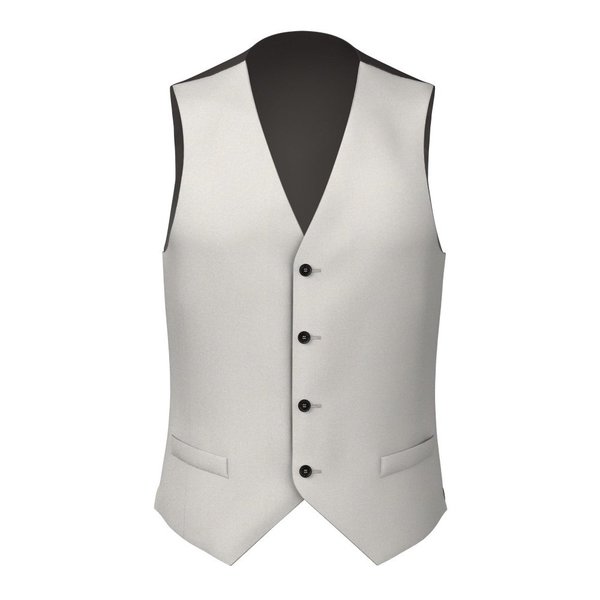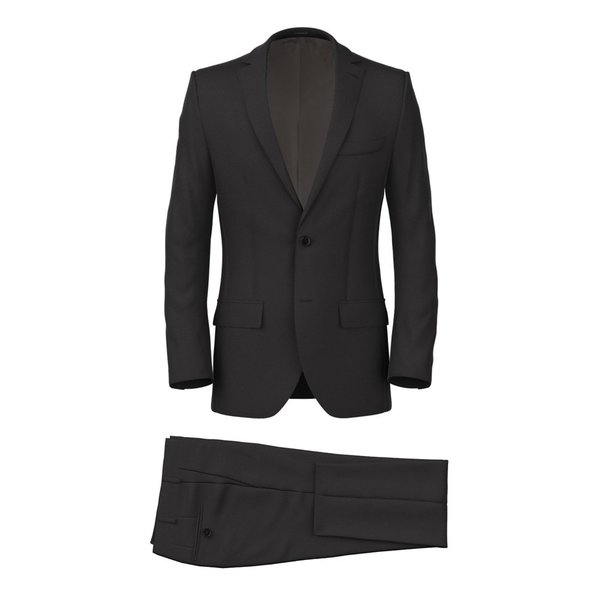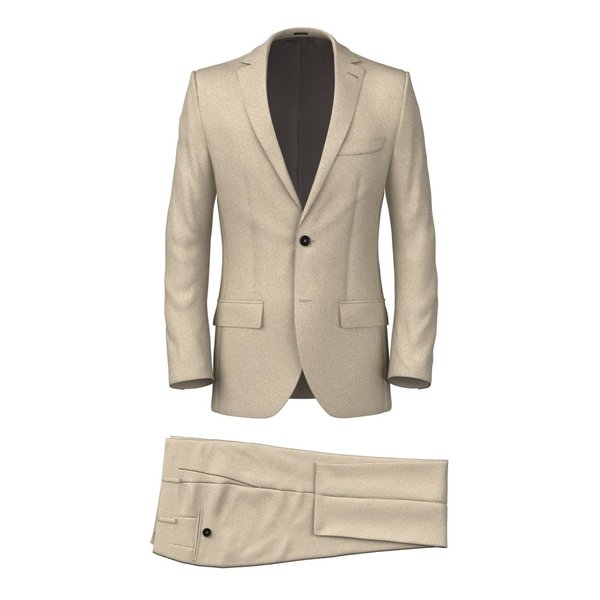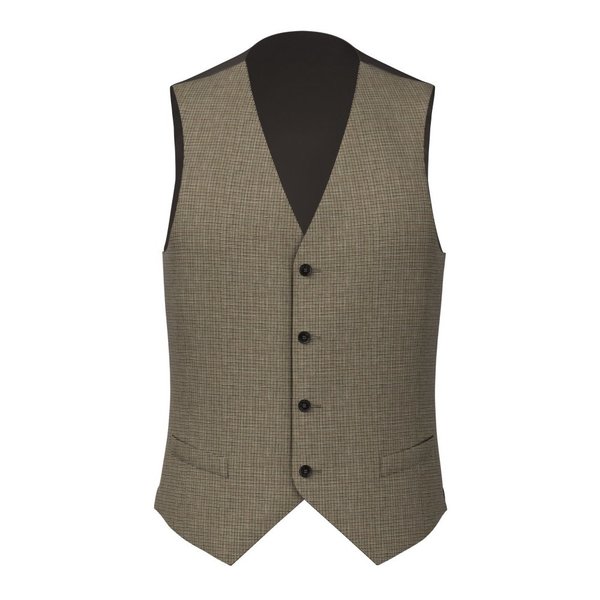The vest is an essential garment for anyone who loves classic elegance: it’s a fundamental element of a three-piece suit and it has gained over the course of time a leading role in the male wardrobe by being an indispensable protagonist in ceremonies and a precious ally in business or casual contexts.
Here is all you need to know about the vest: its history, its characteristics, how to choose it, match it and wear it.
Menu
Vest or waistcoat?
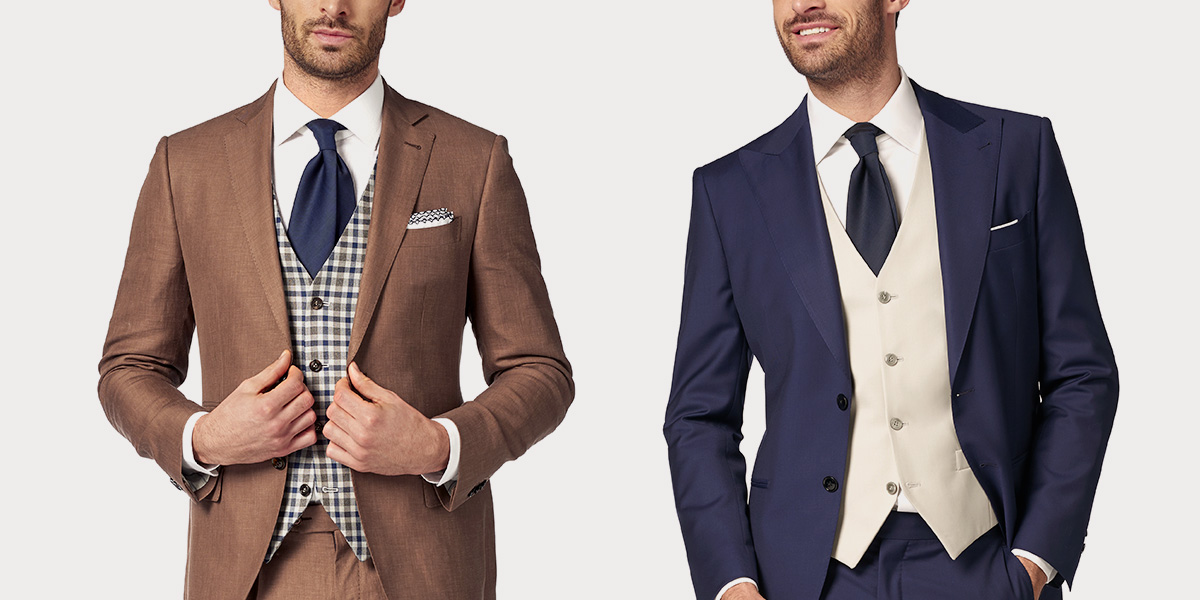
The term vest derives from the French language veste “jacket, sport coat”; today the common French term for the a vest-waistcoat is ‘gilet’, and it is sometimes rendered graphically in Italian as ‘gilè’: it’s derived from the Arabic jalīkah, which identified a jacket worn by prisoners in Algeria. This term originates from the Turkish word yelek, which indicates a sleeveless jacket worn by men and women in the Ottoman Empire.
In addition to vests, there is also the word waistcoat. In common parlance, vests and waistcoats are often used interchangeably to refer to the same item of clothing, but the two terms are not always perfectly replaceable.
Vests should be used as a more generic term to denote a sleeveless, informal and sporty item of clothing – such as a sweater or jacket – worn mostly over other clothing (a shirt or jacket).
Waistcoat is instead the most suitable term to indicate the fundamental element of the three-piece suit, together with jacket and pants. It’s obviously sleeveless, it’s worn over a shirt but under the jacket, and must necessarily be sported with a tie or bow tie.
Despite these differences, it is now customary in common language to refer to the waistcoat with the term vest; the opposite is not always acceptable: for example, consider the orange or yellow vests worn on construction sites, for which the expression “yellow waistcoat” would seem somewhat out of place.
History
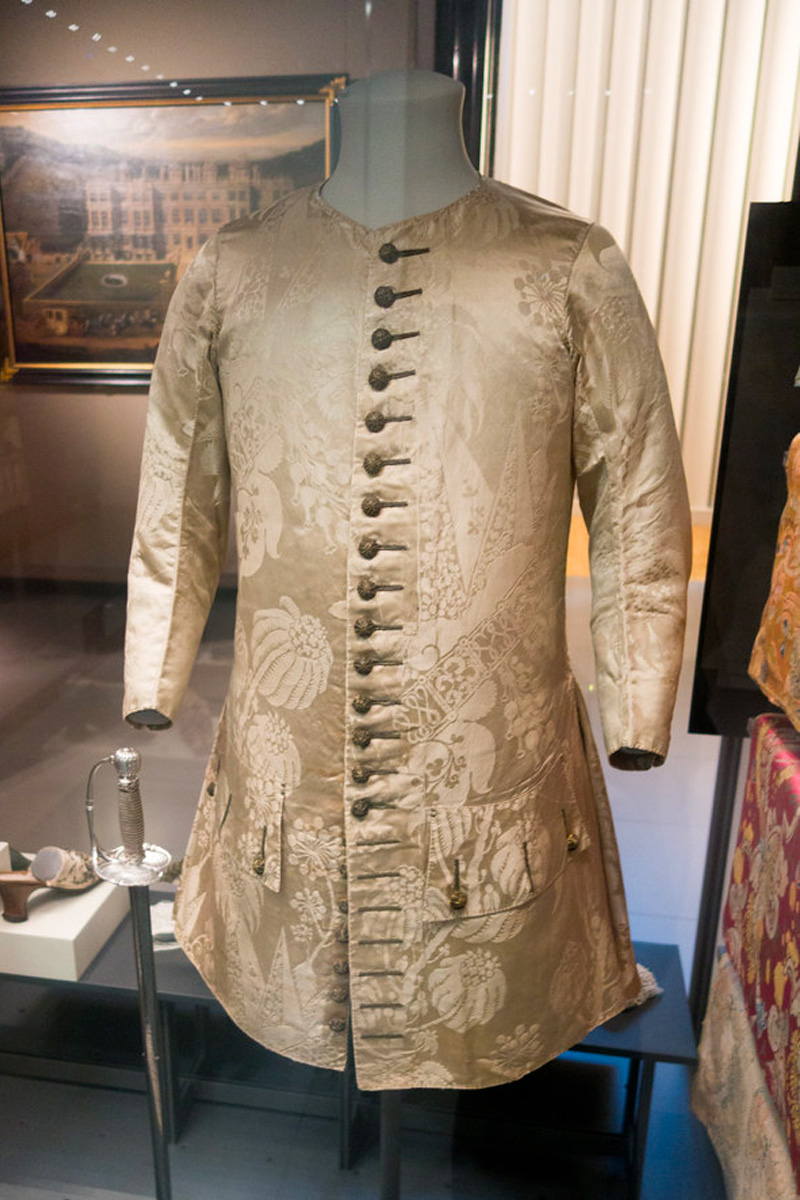
Tracing the historical evolution of the vest is not simple: the distant ancestor of the vest seems to be the justaucorps, a sort of long knee-high coat worn by men in the second half of the XVII century and throughout the XVIII century.
The garment was of French origin and was subsequently introduced to England; in 1666 the English king Charles II Stuart, in opposition to the French fashion of the justaucorp, decided to introduce the term ‘waistcoat’ in the English vocabulary, with which it is still known today.
Used by nobles, the historic waistcoat was a knee-length jacket, usually worn together with trousers and an overcoat of equal length: the suit formed an ensemble that would later evolve into the current three-piece suit.
It is interesting to note that initially the sleeves were an integral part of this item of clothing, but during the 1700s they were gradually removed for practical reasons.
After the French Revolution of 1789, anti-aristocratic sentiment in France (and elsewhere in Europe) influenced the wardrobe of men and women: vests and waistcoats became much less elaborate, shorter and narrower, taking on a secondary stylistic role compared to the overcoat.
During the 1800s with the introduction of the jacket, the vest was further relegated to a second-tier function in the three-piece suit, also for practical reasons: the waistcoat was primarily used to cover the suspenders and to house the pocket watch in the dedicated pocket.
Starting from the 1920s, thanks to the increasingly massive use of the belt and the replacement of the pocket watch by the wristwatch, there was a progressive deconstruction of the three-piece suit in favor of a freer, and less tied to classical elegance, fashion.
If, on one hand, this trend has led to a more casual business style, characterized by a more frequent use of the two-piece suit (jacket and trousers), on the other hand, the use of the vest today is no longer bound to any practicality: this stylistic emancipation has allowed him to regain his own dignity in the characterization of the male wardrobe.
Vest: how it’s made
Generally, elegant vests (waistcoats) have a lining base covered on the front with fabric; on the back there is a strap that allows you to adjust its adherence according to your needs.
The biggest differences between different models of vests depend mostly on the front: single-breasted or double-breasted buttoning, and on the presence of the lapels.
Single-breasted vest
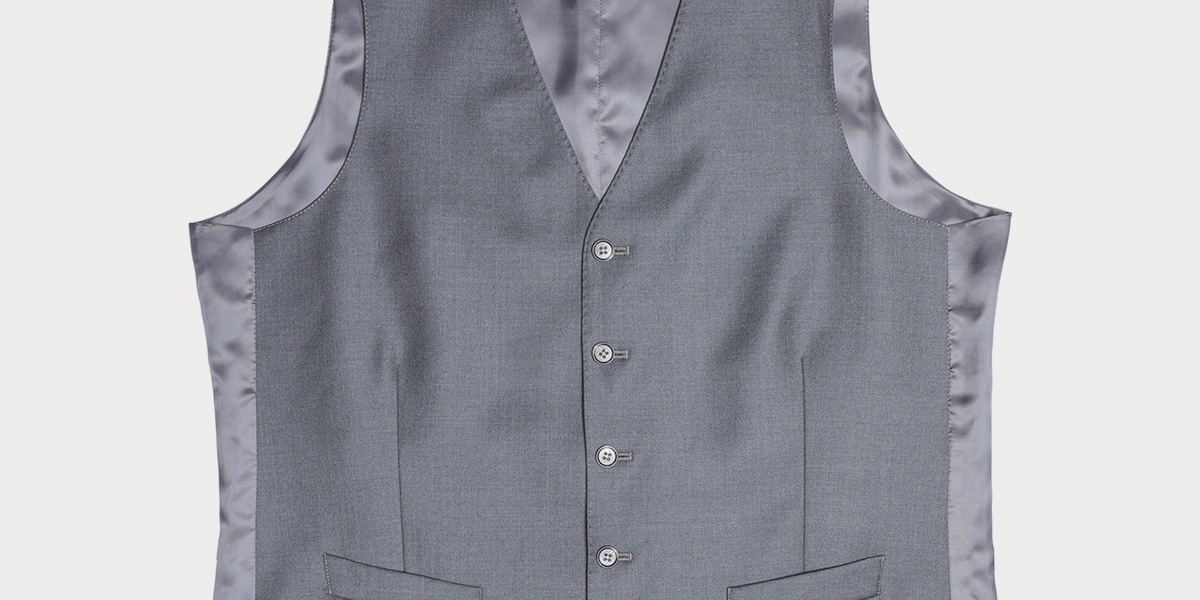
The single-breasted vest is the most common choice. It is possible to choose a configuration from 3 to 6 buttons; the greater the number of buttons, the greater the formality level of the vest. A 3-button waistcoat will appear sportier and slimmer than an equivalent and more upright 6-button vest.
We advise you to always choose a vest that has at least one more button than the jacket with which you want to wear it. If you wear it with a three-button jacket, your vest must have at least four buttons.
Generally the single-breasted waistcoat is devoid of lapels, a feature that gives it a more minimal, simple and discreet cut.
It should be worn over the shirt and under the jacket or blazer. As with the jacket, the rules of classic elegance require that you never fasten the last button at the bottom, to avoid unexpected rigidity during disordered and sudden movements.
If you want to adopt a more contemporary, “alternative dandy” style, you can wear a single-breasted waistcoat on a shirt without a jacket. However, this choice must always be tied to informal and sporting contexts only.
Double-breasted waistcoat
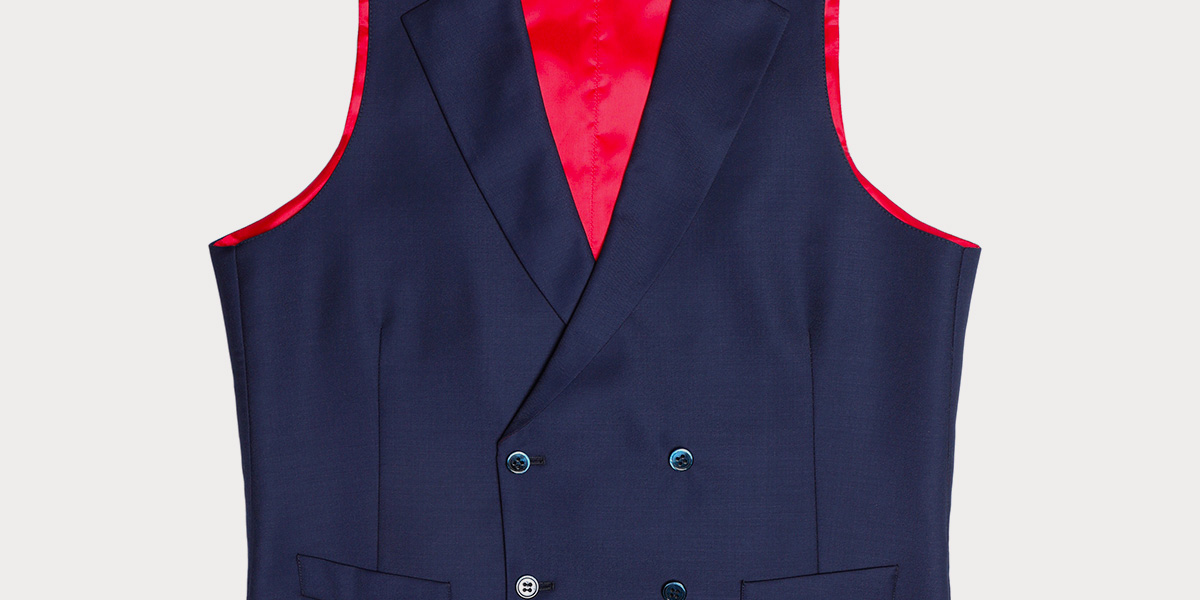
The double-breasted waistcoat is the most formal solution. The main configuration is that of 6 buttons, although it is possible to observe 4 or 8 button versions. It is the most suitable vest for ceremonies or events in which you have to show more rigor.
Double-breasted vests usually also have lapels, which can be shawl or, more rarely, pointed or notched lapes, for a more sophisticated and demanding style.
They must always be worn fully buttoned, with elegant clothes, over the shirt and under the jacket; they should never be worn without a jacket, unless you want to openly challenge the canon of classic elegance.
How to wear the vest
Excluding exceptions, the vest must always be worn over a shirt with a buttoned collar and under a single-breasted jacket or blazer. It should never be worn under a double-breasted jacket: the neck of the jacket, in fact, must be large enough to allow the waistcoat to be visible.
It must be snug and adapt perfectly to your body, so as to make it comfortable to carry the jacket over it. Its length must be sufficient to be able to cover and hide the waist on the front, while laterally and on the back it is usually shorter.
For these reasons, opting for a made to measure vest is always the best solution: you will be sure to wear a vest of the right length, made to fall perfectly and adapt to your physicality.
How to match the vest to the dress
When it comes to choosing the color and to match the vest to the suit, there are mainly two color alternatives available: opting for the three-piece suit or choosing a contrasting vest.
Three-piece suit
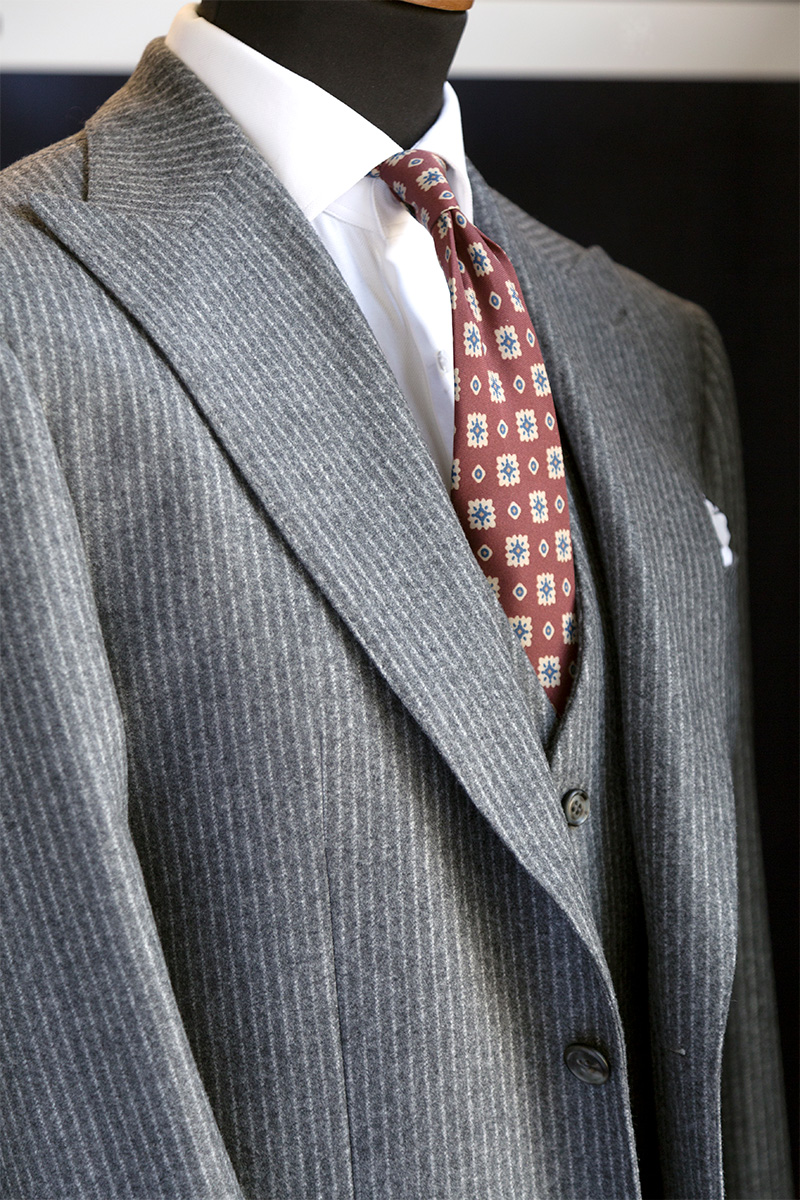
It is the most classic and traditional choice and consists in wearing a vest made of the same fabric (and consequently the same color) of the suit. The waistcoat then will be an integral part of the suit, the third piece together with jacket and trousers. Hence the expression three-piece suit.
The three-piece suit is certainly the most versatile configuration ever: elegant, perfect for formal and solemn occasions, but at the same time simple and safe, also suitable for more informal contexts.
Contrasting waistcoat
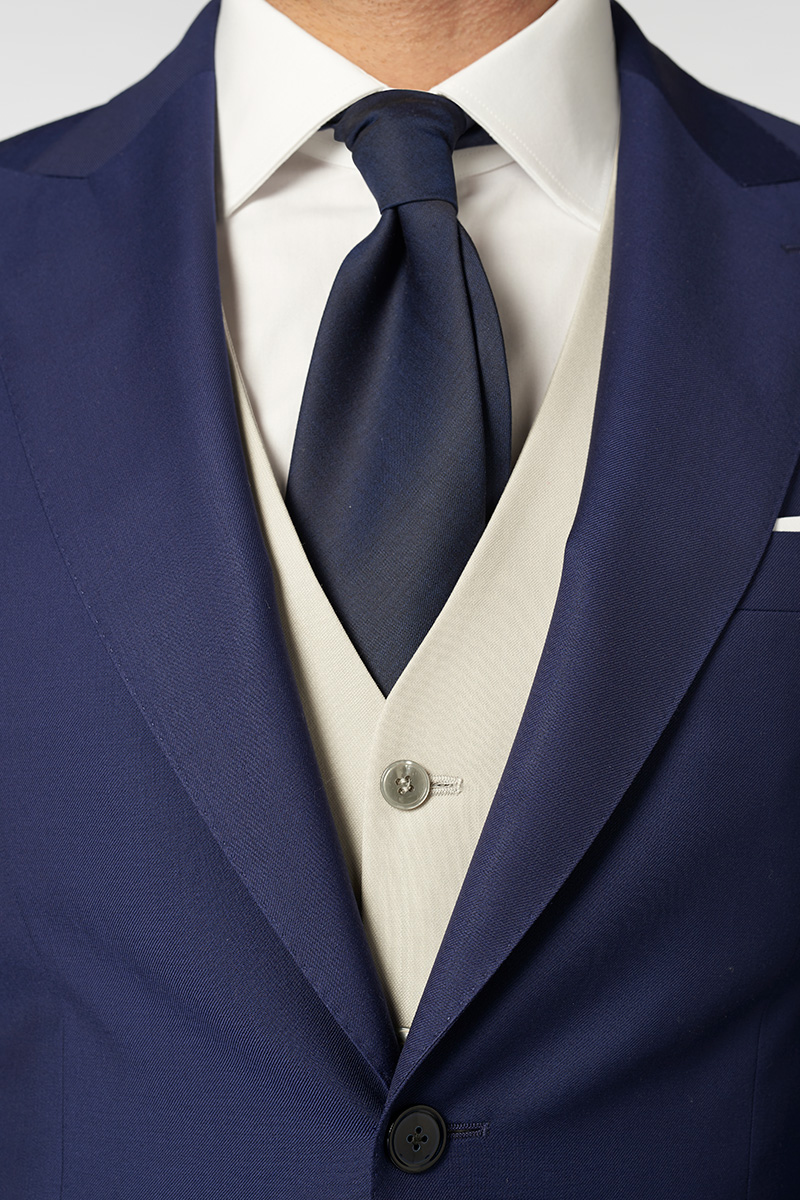
The contrasting vest is the main alternative to the three-piece suit: you will choose a vest with a color or pattern in contrast with that of the suit. In this case, the waistcoat will be more prominent than what happens with the three-piece suit, standing out on every other piece of clothing.
If the combination is right, the contrasting vest can give life to particularly successful and elegant suits, but the risk of making a mistake is much more concrete. The advice is therefore not to exaggerate in the chromatic contrast and choose a color that can be combined in harmony with jacket, pants and shirt.
Better not to overdo it, especially if you have decided to wear a broken one: the clown effect is always around the corner and absolutely to be avoided.
Blue suit and light gray vest: for a ceremony or wedding
The perfect match for a groom: the vest is in evidence and the protagonist.
Dark gray suit and light gray Prince of Wales vest: for office and business
The ideal suit for business occasions, thanks to the rigor of the gray suit and the Prince of Wales vest which softens its rigidity with a professional feel.
Beige suit and brown vest: casual and disengaged
The perfect solution for sportier, brighter and more informal contexts, where rigor must give way to the sprezzatura.
Belt or suspenders?
Ideal companions of the vest are the suspenders. As mentioned above, one of the practical functions of the vest has always been to hide the suspenders and even today the garment can continue to perform this function.
The belt is instead less recommended as its presence risks making the waist more bulky and voluminous, creating an unsightly and clumsy effect.
Tie or bow tie?
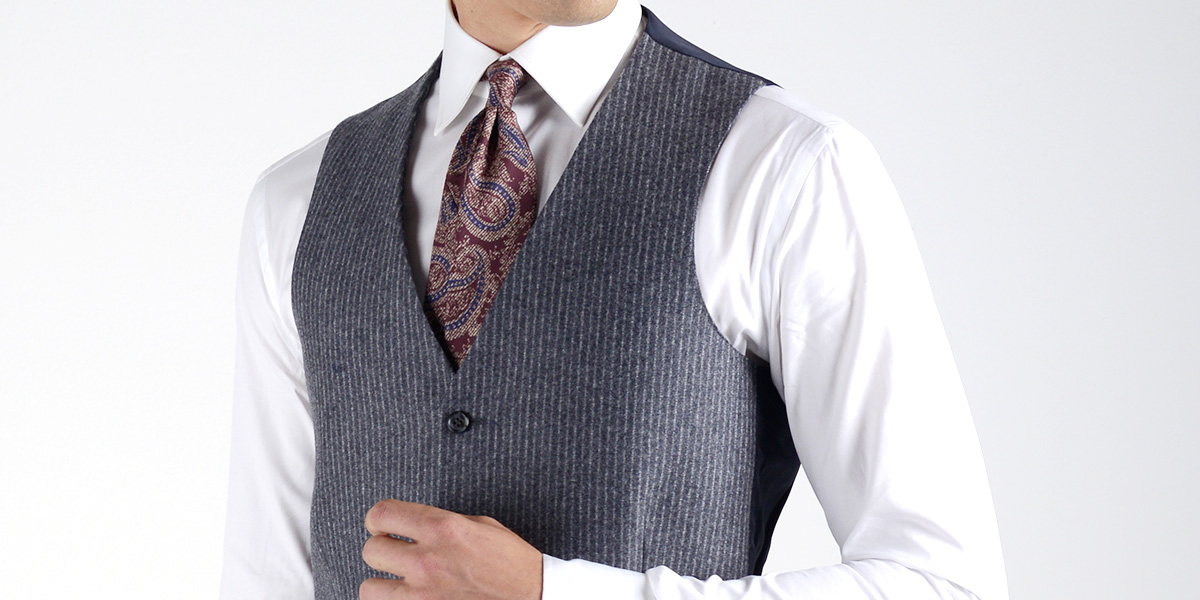
The vest should always be worn with a shirt with a buttoned collar; this also requires wearing a tie, to underline the formal cut of the suit.
The bow tie is less advisable, which stylistically does not suit the three-piece suits. Unless you want to amaze with a detail over the top, it is better to always prefer the tie.
If you really are in love with the contemporary dandy style, you can also leave your neck free and give up the tie, provided you choose a context and a clearly informal outfit. Remember that freedoms of this kind are banned on the most elegant occasions.
Now that you know the history of the vest perfectly and all the tricks to be able to choose the right waistcoat to wear, you just have to try a tailored one and start configuring the right vest for you.

